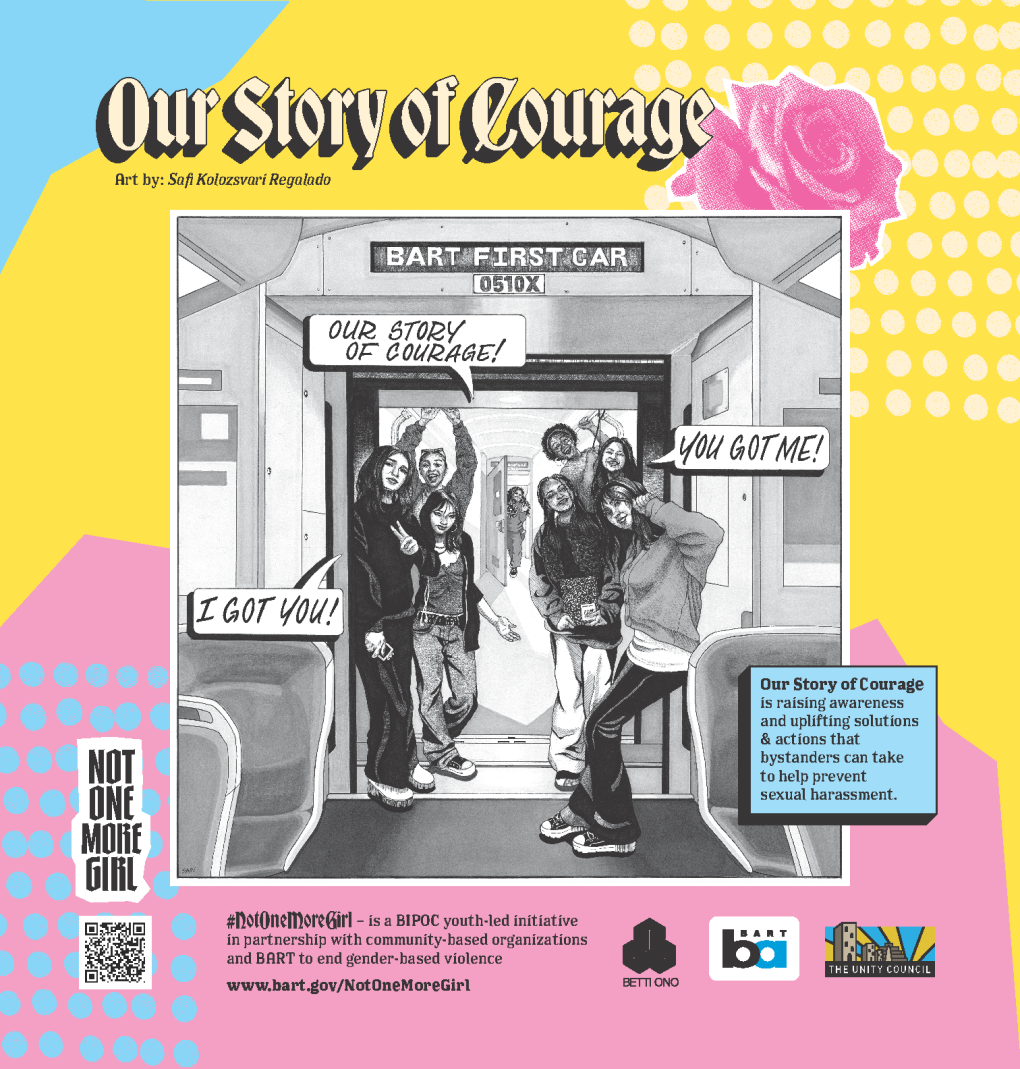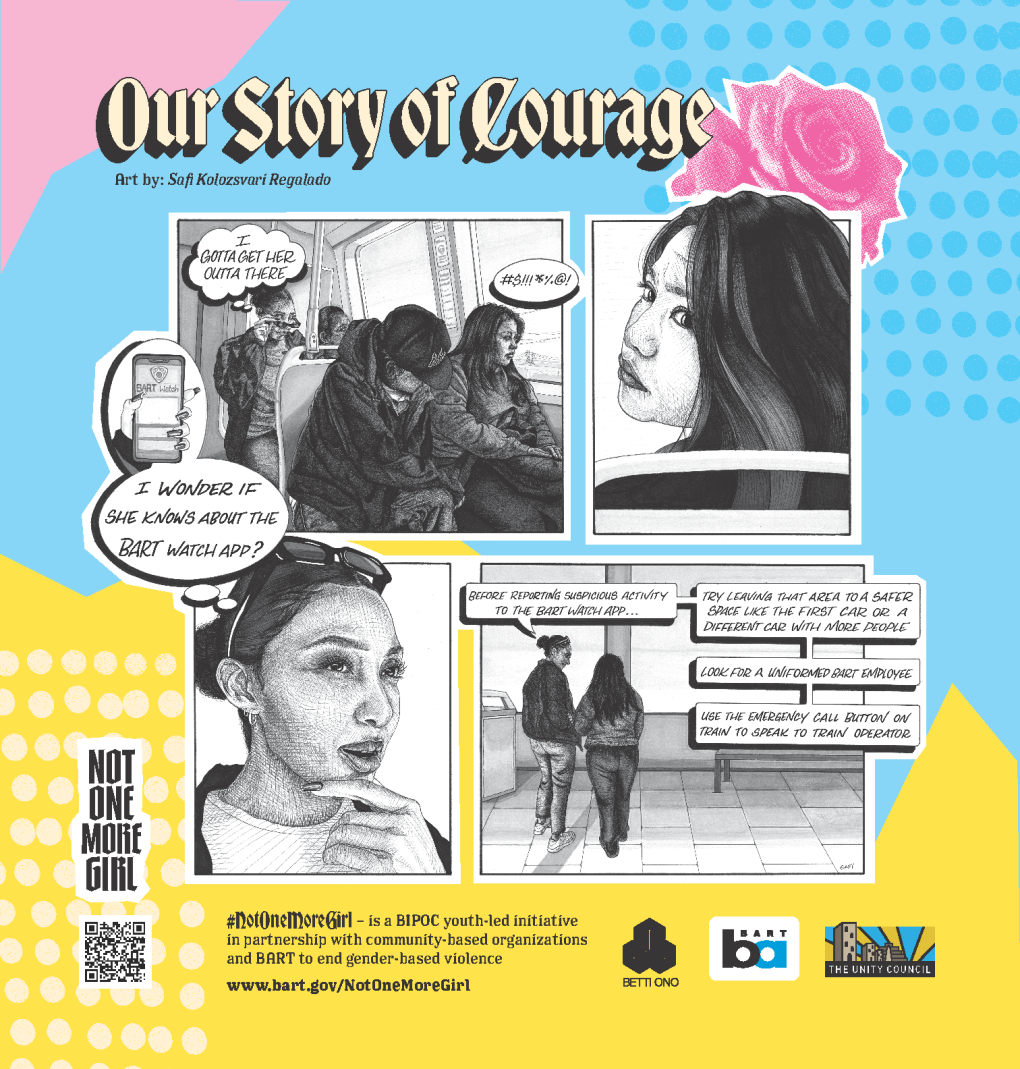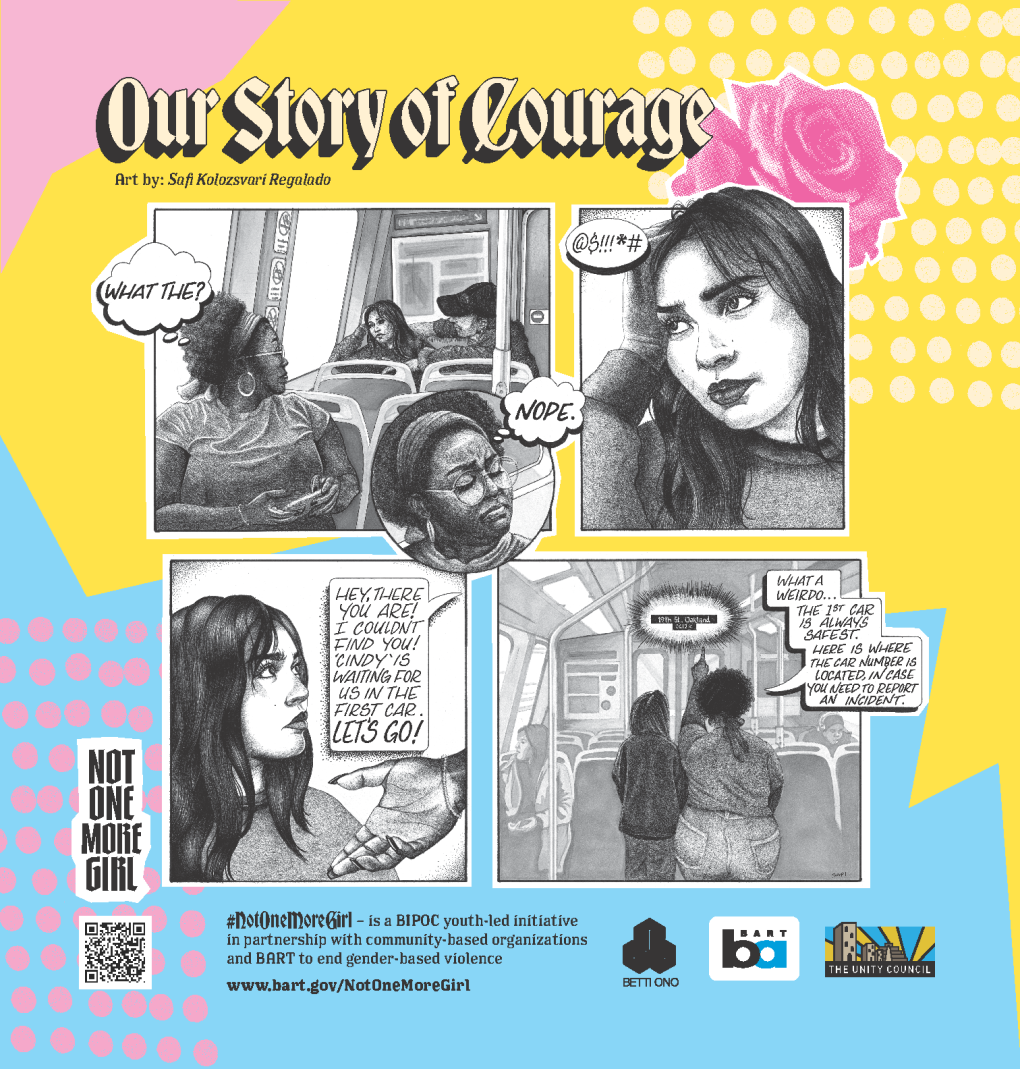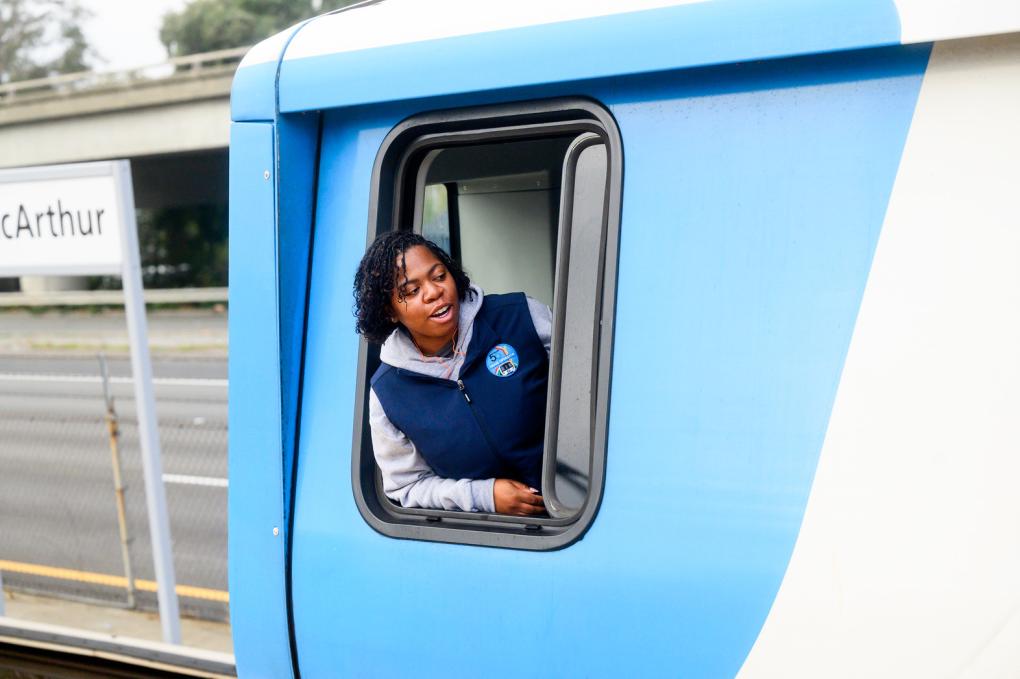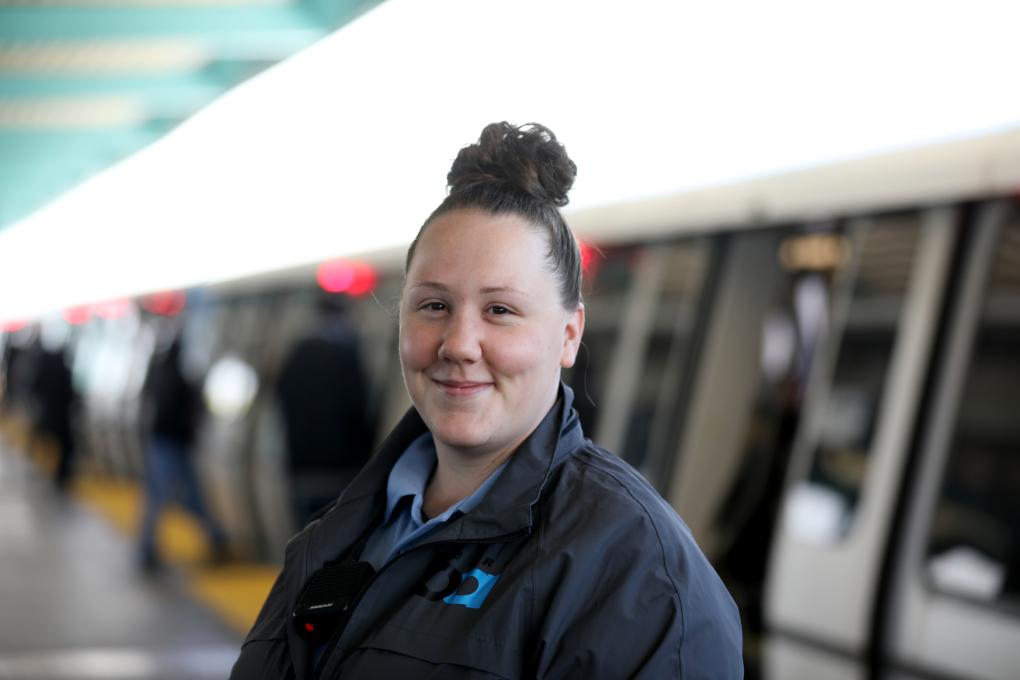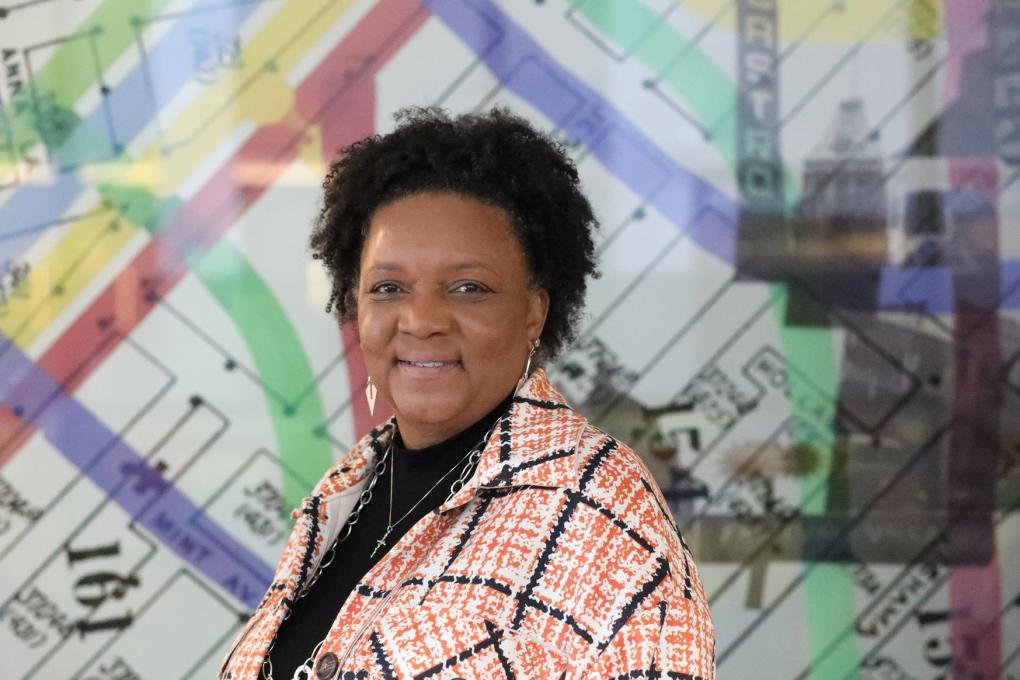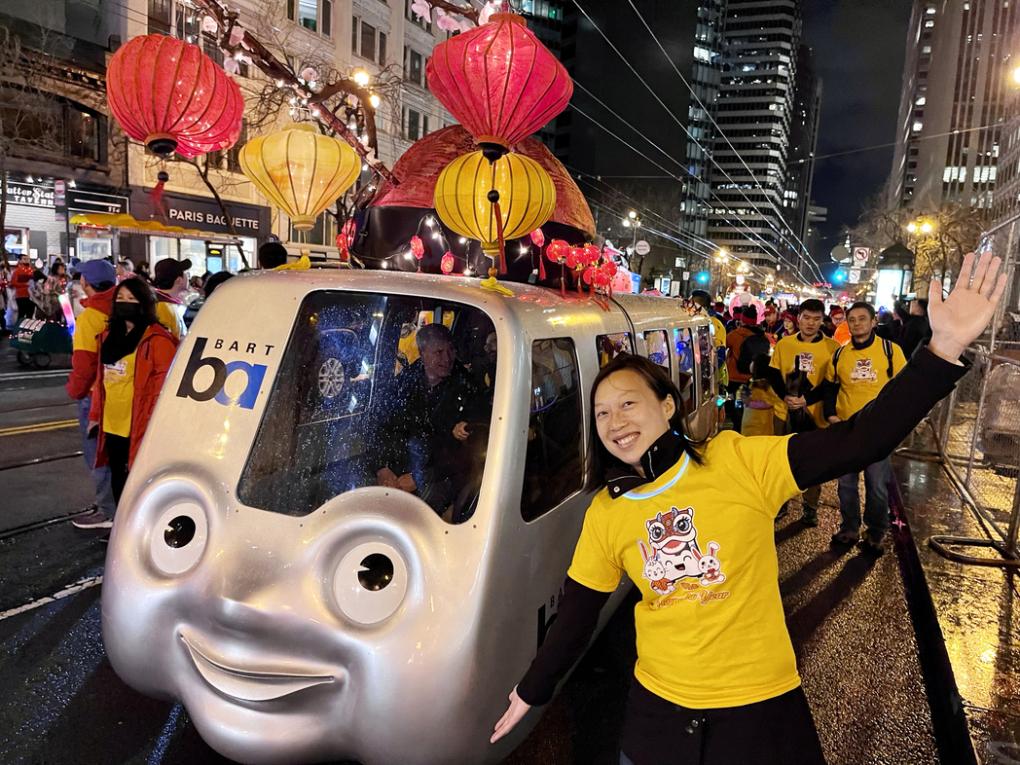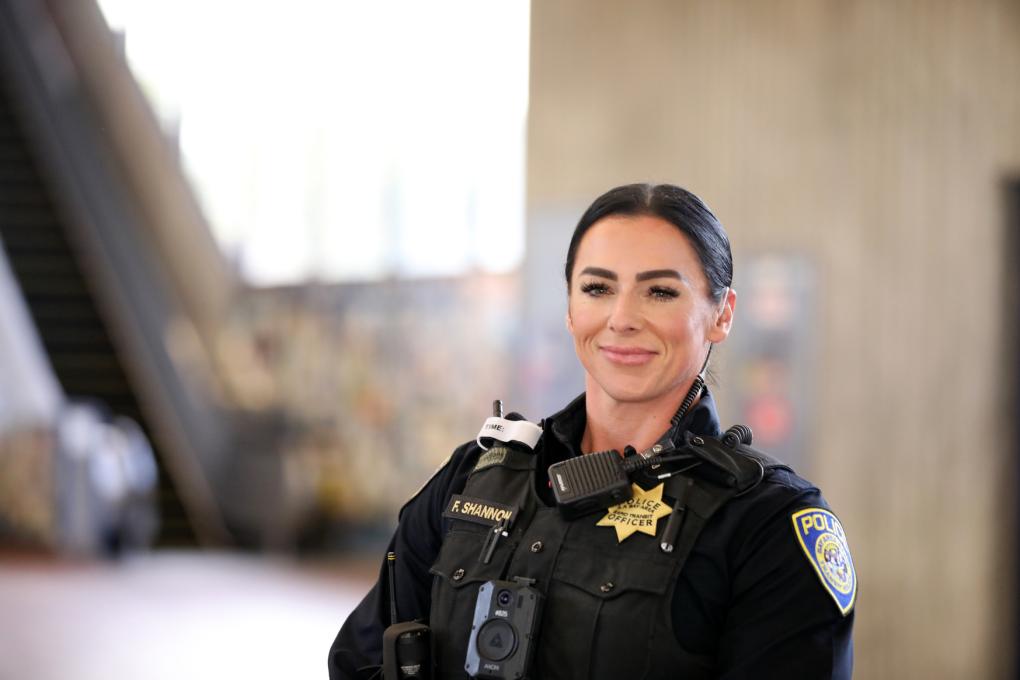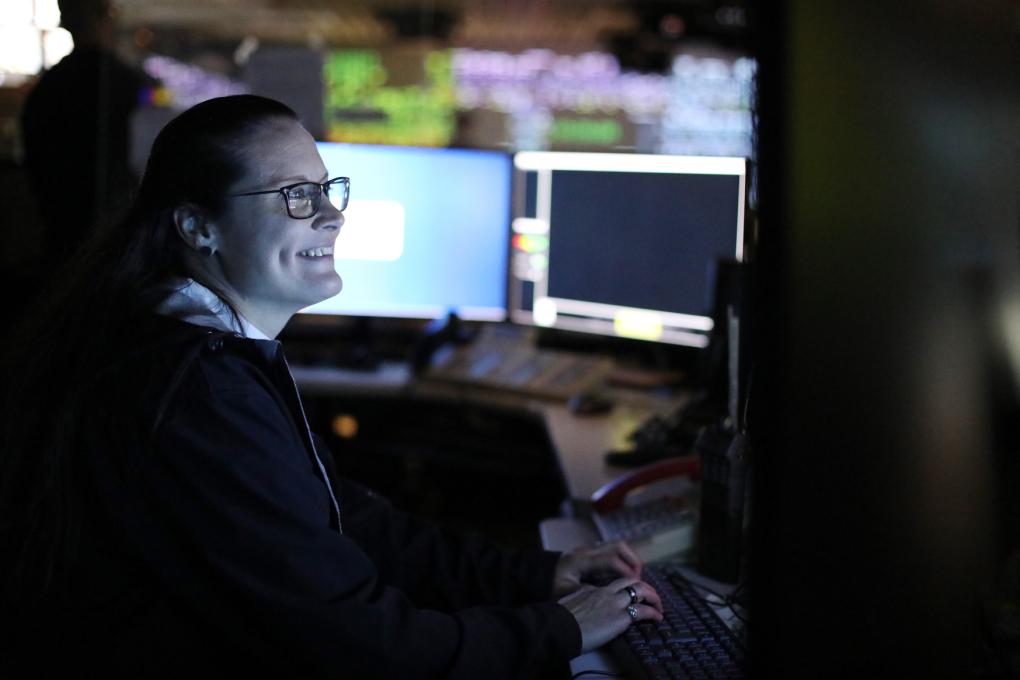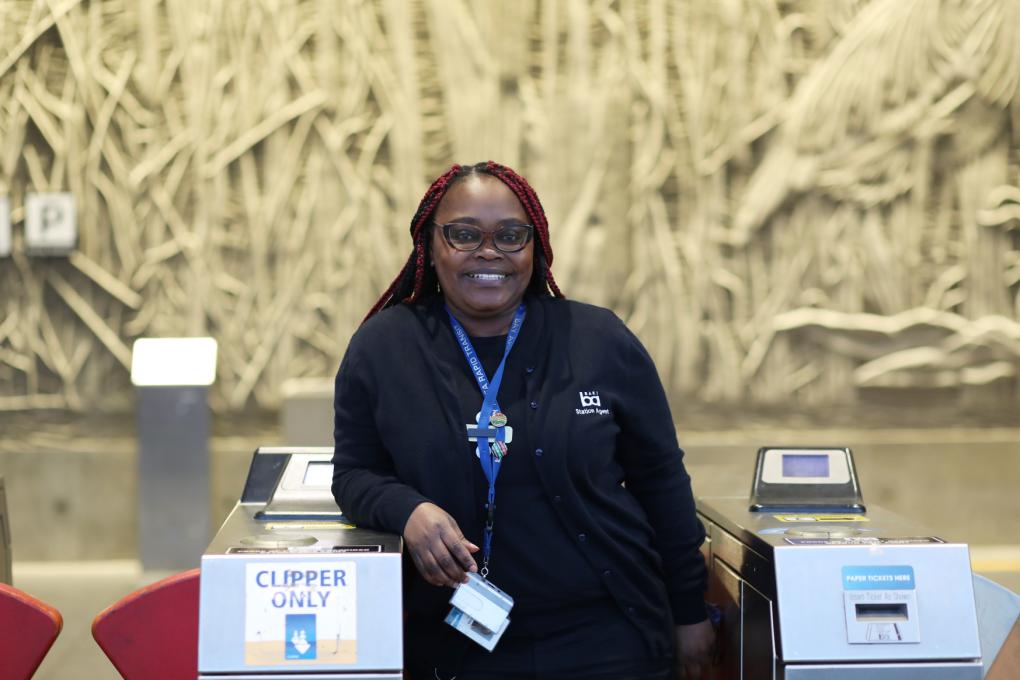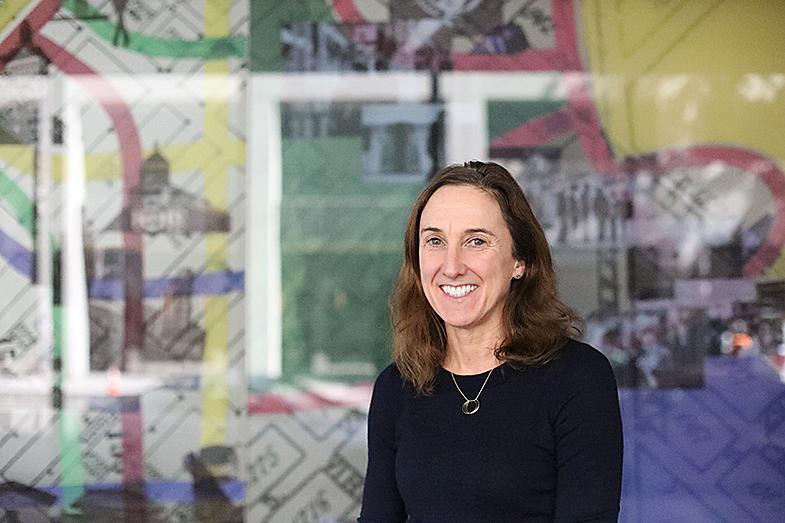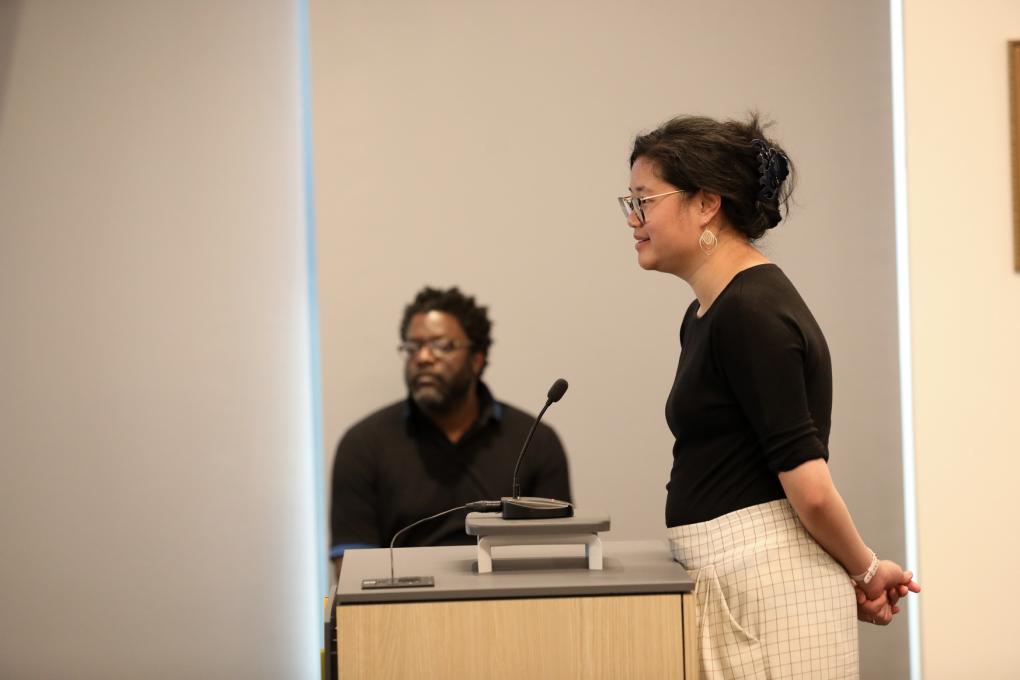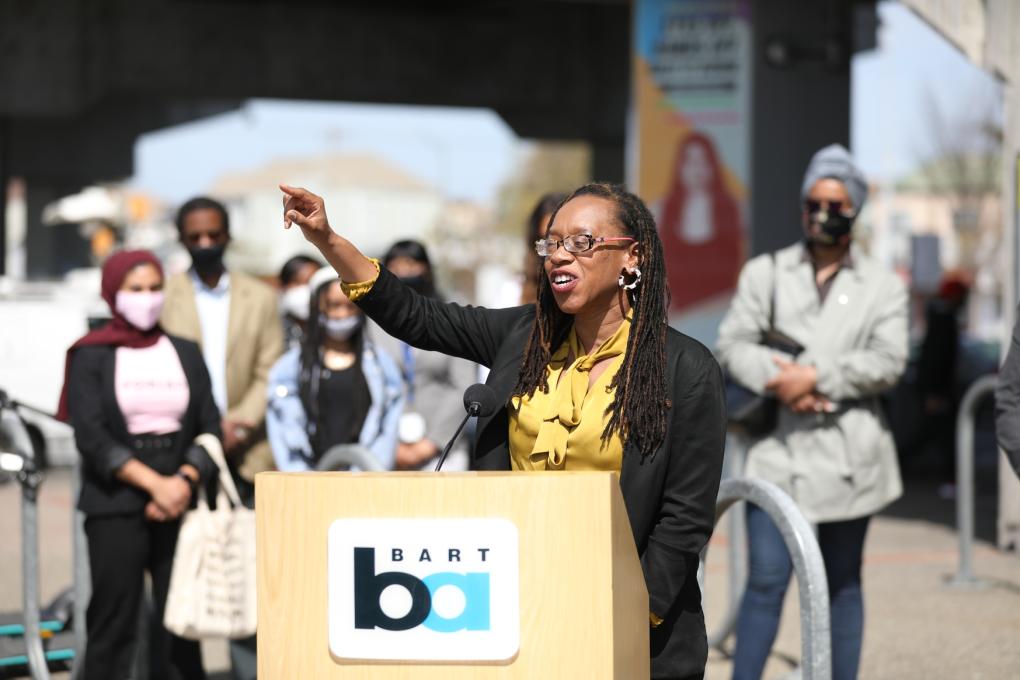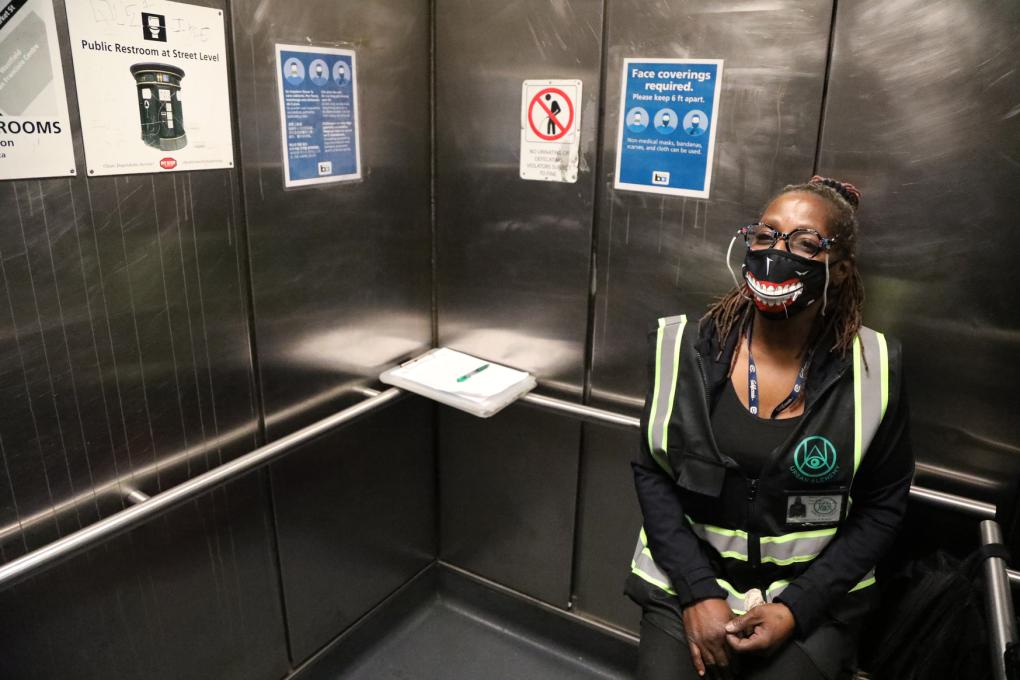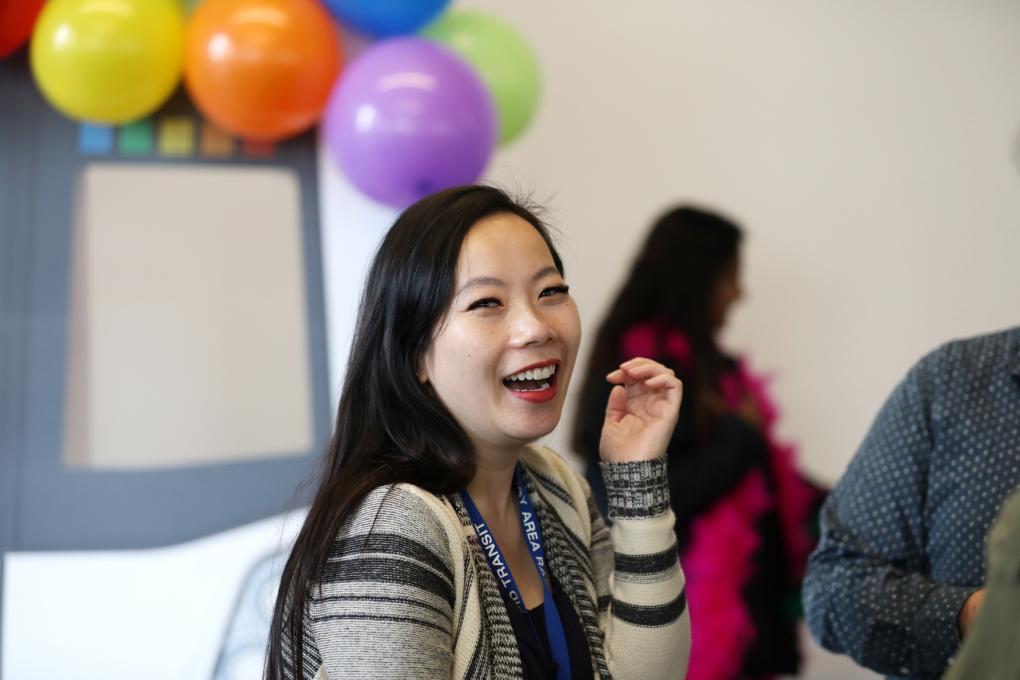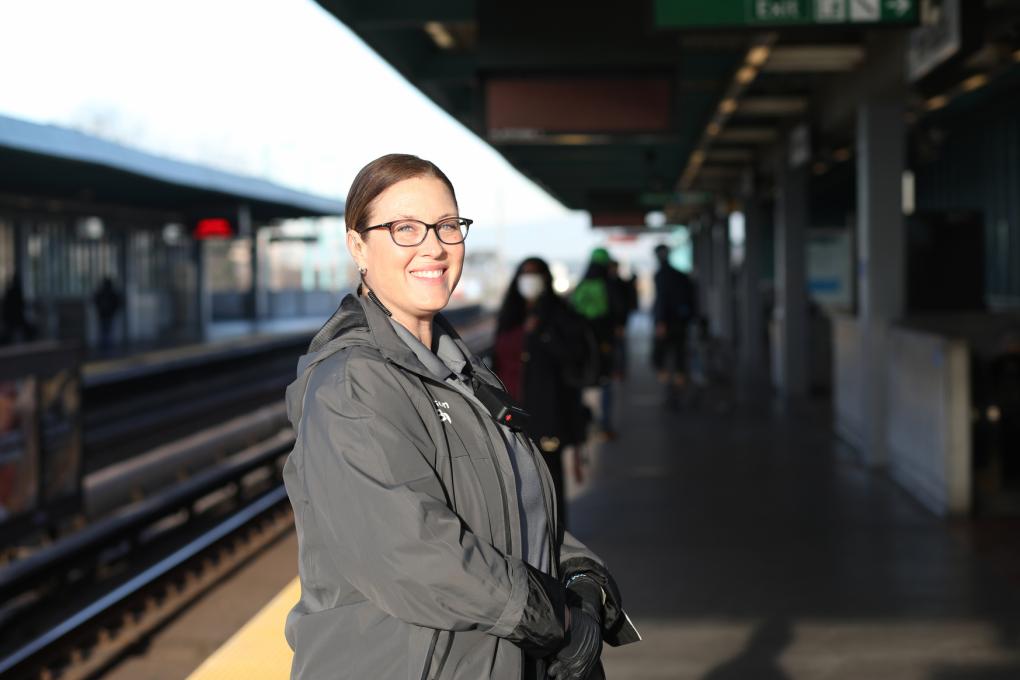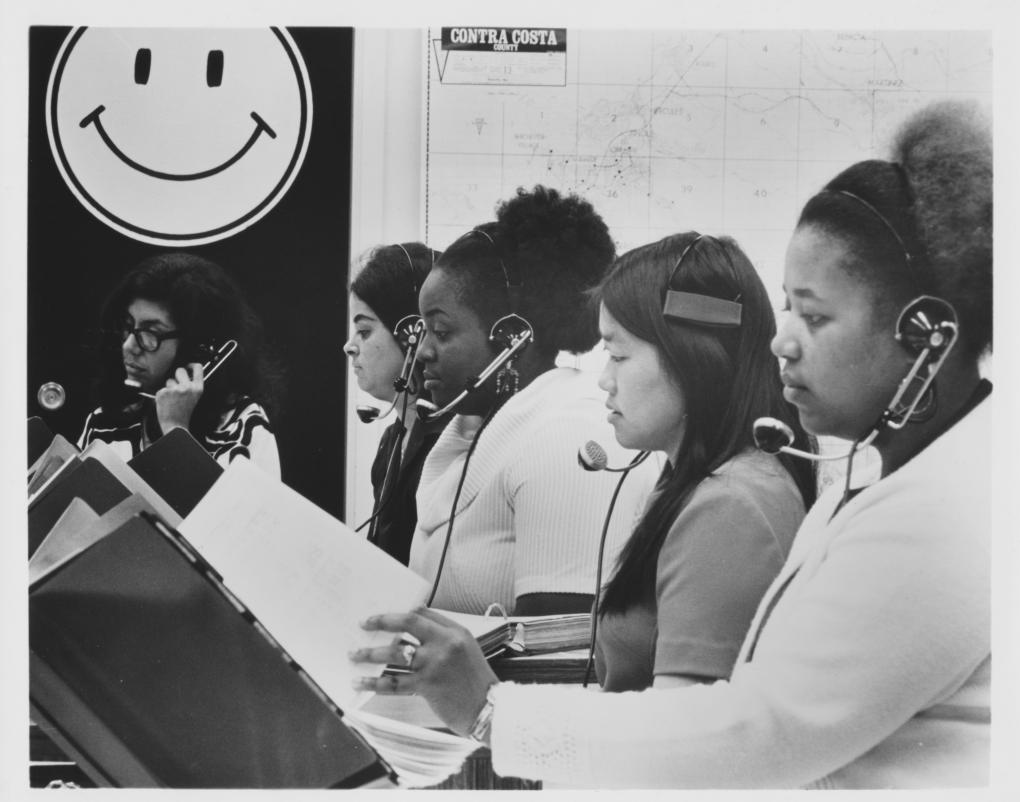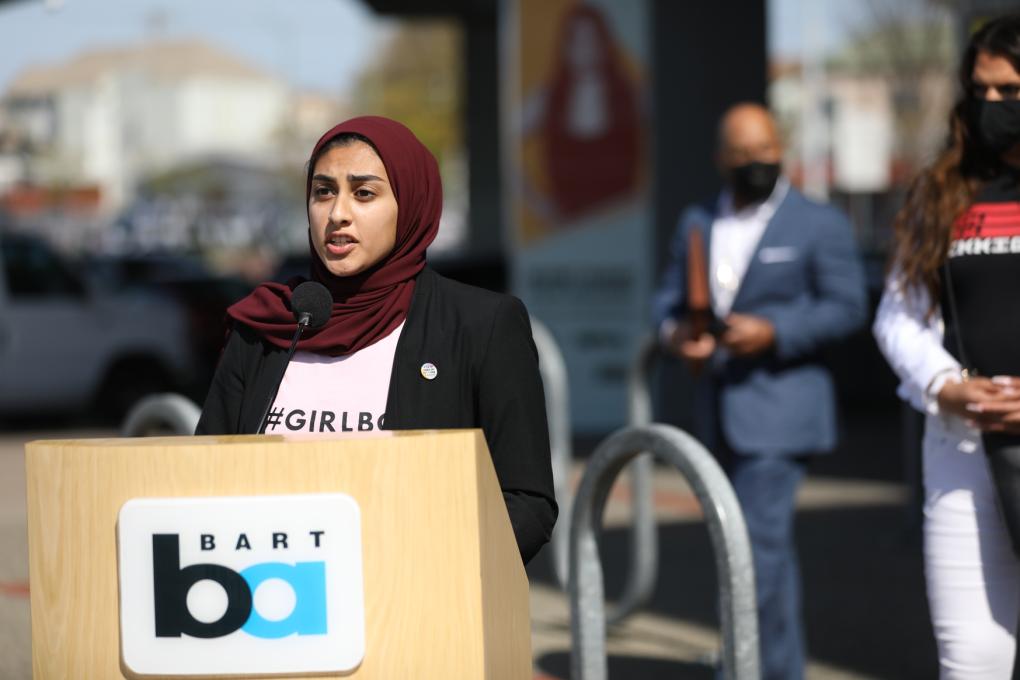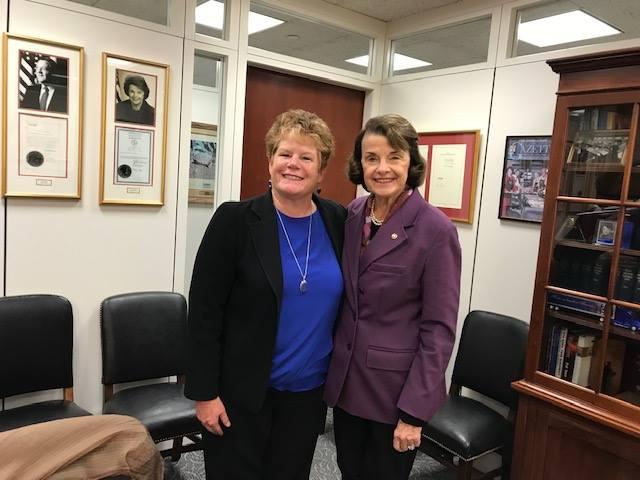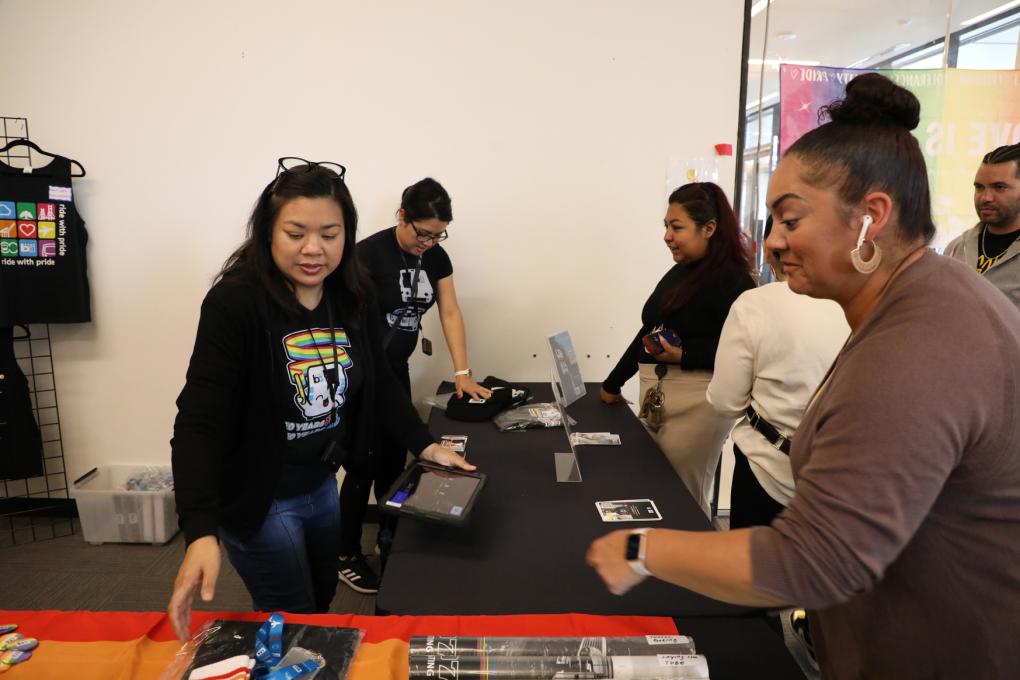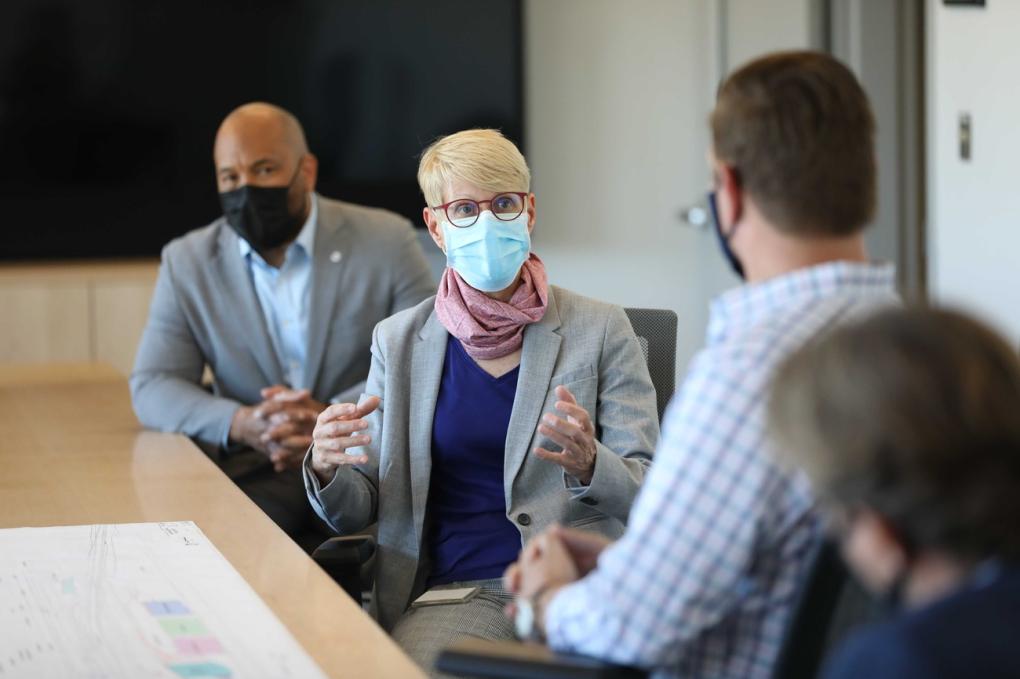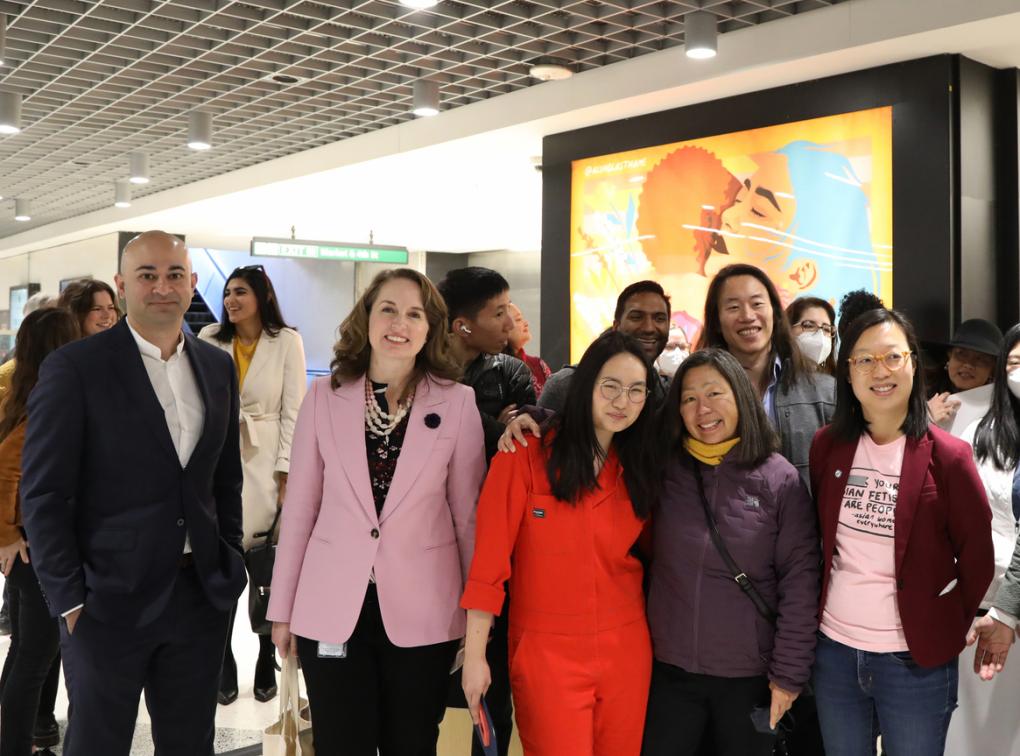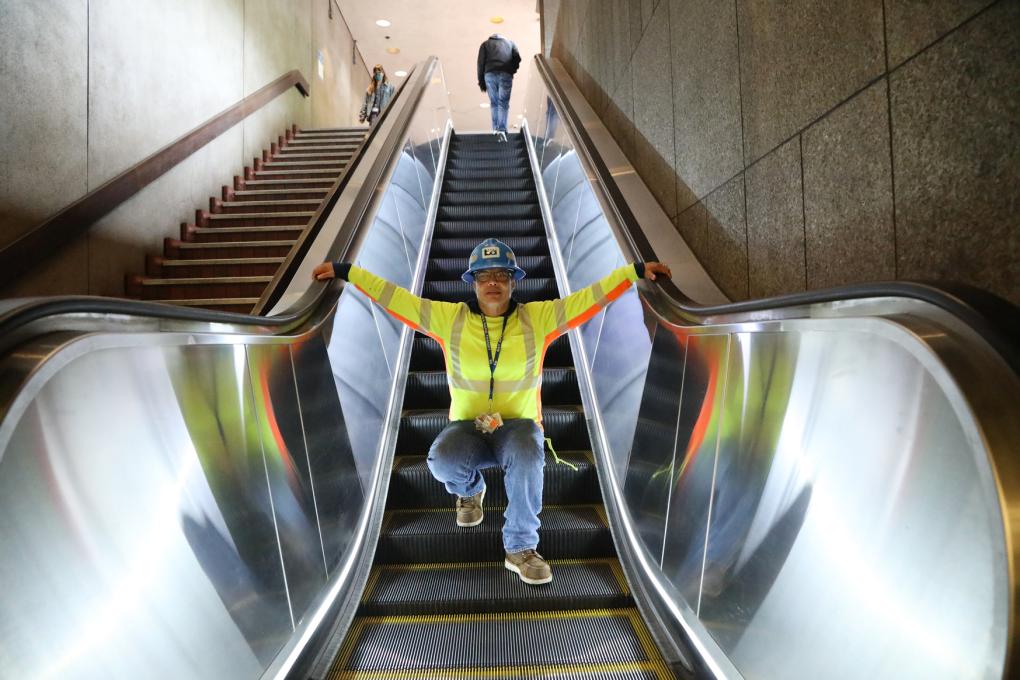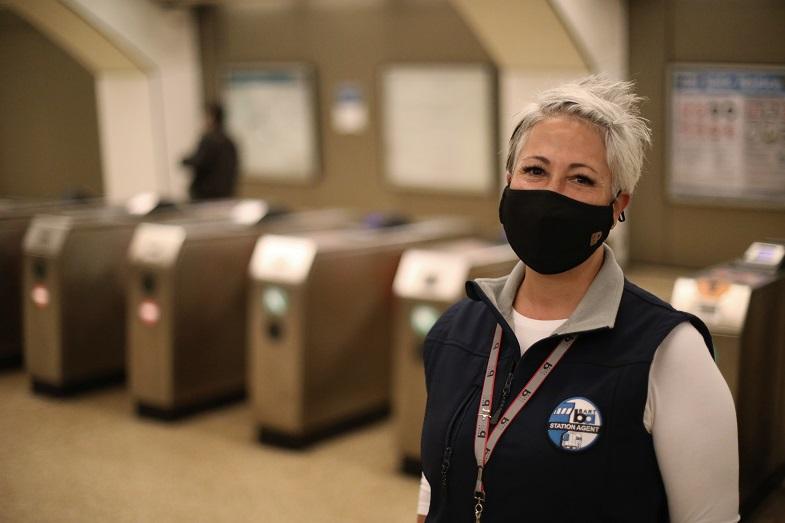Search Results
Pittsburg Center
We want to hear from you! Tell us your favorite BART story and enter to win a $100 gift card
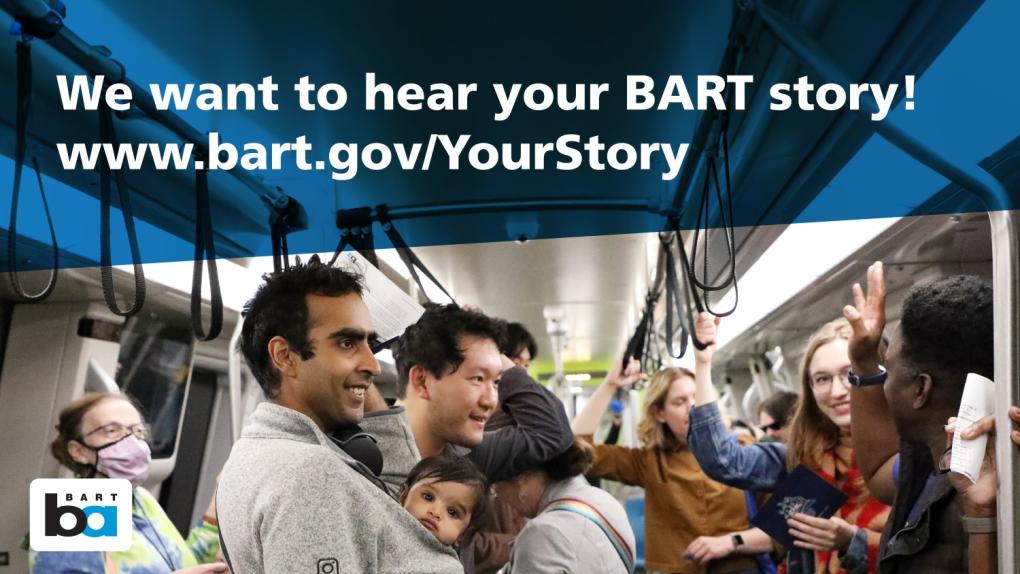
On Tuesday, Sept. 5, 2023, BART is launching a call for riders’ BART stories. We want to hear what BART means to you and gain insight into how we can continue to improve.
Do you have a favorite BART memory? Have you met a dear friend or life partner aboard a train? Did you take BART to a seminal life event? Have you been sitting on a unique idea to improve the system? We’d like to hear it.
To answer our questions, visit bart.gov/YourStory. We may contact you to learn more about your BART experience for future articles and communications (but only if you give us permission). You have the option to remain anonymous or share select information. Once you've answered the questions, you can enter a drawing to win one of three $100 e-gift cards. We’ll be sharing these stories in the coming months.
This call for stories is one aspect of our Role in the Region Study, which provides insight into emerging trends and outlines BART’s benefits to the Bay Area through illustrative data, personal narratives, and factsheets, culminating in a comprehensive final report. The final report is anticipated to be completed in Spring 2024. You can keep up to date with the project and explore factsheets at bart.gov/RoleintheRegion.
These materials highlight BART’s essential role in the region’s success as well as the compelling need for the continued funding and support of this essential transportation system. This study further develops the analyses and values illustrated in BART’s Transit Saves campaign and builds upon the findings from the 2016 Role in the Region Study.
This Transit Month, ride BART and tell us what it means to you!
Answer the questions and share your story at bart.gov/YourStory.
Take BART to Oakland Museum's 15th Annual Dias de los Muertos Celebration
Dancing skeletons and sugar skulls return as the Oakland Museum of California hosts its 15th annual Días de los Muertos celebration. The exhibition opens Wednesday, October 8, continuing through December 7. Guest curator Fernando Hernández titled the exhibition "Evolution of a Sacred Space: Días de los
Women's History Month 2024: BART celebrates the trailblazing women who have shaped our world from past to present
Today, March 1, marks the beginning of Women’s History Month, a time to recognize and celebrate the vital role women have played – and continue to play – in American history, including the history of public transportation, which has been shaped and transformed by women.
BART is home to an amazingly diverse workforce with women serving in crucial roles across the agency, from trackworkers and train operators to executives and our Board of Directors, which is composed of a majority of women.
To spotlight just a few exceptional women in the BART family:
Tera Stokes-Hankins is the first woman to serve as Chief Transportation Officer at BART. Tera started as a part-time station agent in 1995 nearly fresh out of college. Since her hiring, she has been promoted six times! Tera says she is motivated to work hard each and every day because “if BART’s not running, that means people can’t get to an interview or an appointment or class. To get up every day and make sure we’re ready to go and putting our best foot forward – that keeps me going." Read more about Tera’s BART journey here.
Thu Nguyen, a track operator, came to the Bay Area a few years ago with her daughter and just $300 in her pocket. She didn’t have housing or a job, but she eventually landed at Cypress Mandela Training Center, which offers free pre-apprenticeship program for Bay Area residents and helps connect them with employment opportunities, including at BART. Foreworker Jaime Ramirez said Nguyen is “no holds barred.” He added: “She’s not afraid of the work. She just goes for it.” Read more about Thu here.
Stephine Barnes, a Crisis Intervention Specialist in BART’s Progressive Policing Bureau, recently won a Rider First Award in recognition of her work to move Bay Area transit forward. Stephine has worked for BART for more than two decades, and in her role as a CIS, she has changed the lives of many individuals. Her work has focused on reducing prison recidivism and advocating for those facing homelessness through intervention/prevention, de-escalation, case management, working with community partners, networking, and family reunification. Read more about Stephine here.

From left to right: Tera Stokes-Hankins, Thu Nguyen, and Stephine Barnes.
BART is committed to recognizing, supporting, and uplifting all the passionate and hardworking women in the BART family by fostering a culture that values diversity, equity, and inclusion – the themes of Women’s History Month 2024.
We thank every single one of the women at BART, who are working every day to make the system better for everyone.
Happy Women’s History Month!
BART's annual Holiday Toy Drive collects more than 1,500 toys and $1,700 in gift card donations
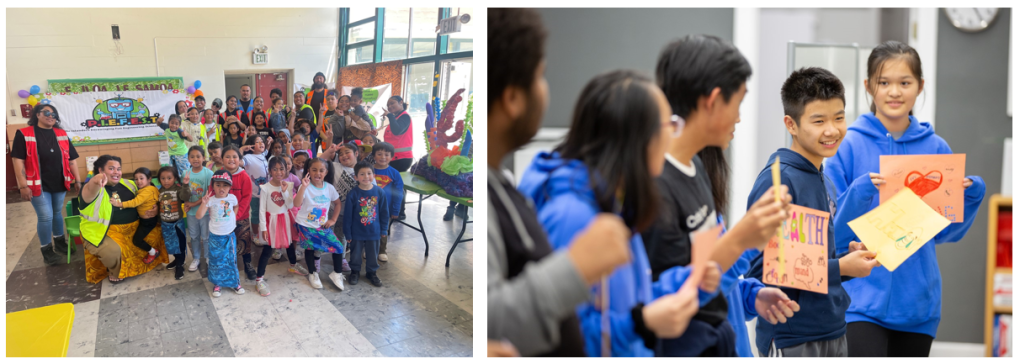
Left Image: A STEAM event with one of SCDC’s collaborative partners, "P.I.E.F.E.S.T." (Pacific Islanders Encouraging Fun, Engineering, Science & Technology). Right image: Participants from CYC’s Bayview Youth Advocates program work on an exercise of gratitude.
Update: The BART Holiday Toy Drive collected more than 1,500 toys and $1,700 in gift card donations this year. The toys were presented to the two recipient organizations, the Samoan Community Development Center of San Francisco (SCDC) and the Community Youth Center of San Francisco (CYC), during the December 21 meeting of the BART Board of Directors.
Each winter, BART gives back to the communities it serves with its annual Holiday Toy Drive, soliciting donations in the form of new, unwrapped toys and gift cards from employees. The donations are gifted to local organizations, selected by the BART Board President from within their district, in a joyful ceremony during the final BART Board meeting of each year.
Board President Janice Li selected two recipient organizations this year: the Samoan Community Development Center of San Francisco (SCDC) and the Community Youth Center of San Francisco (CYC).
“For immigrants like me, holiday time is community time. Growing up, it was important to me to have community spaces where I could speak my language, celebrate my culture, and be proud of my heritage,” Li said. “Organizations like CYC and SCDC are so critical to building welcoming and healthy communities"
She continued: “Both of these organizations have humble beginnings and have always been rooted in supporting youth and families in the community. I love that they believe in and know how to do transformational work, particularly for AAPI communities in the southeastern neighborhoods of San Francisco, where there are fewer resources and services available.”
BART’s Office of External Affairs and BART Police sponsor the drive each year. In 2022, BART collected more than 750 toys and $500 in gift cards for Building Opportunities for Self-Sufficiency.
“The Holiday Toy Drive is the highlight of the season for many BART employees. We are gratified to spread joy and cheer to local children and their families, many of whom rely on our system to get to school, to work, to appointments, and to gatherings with their families during the holidays,” said Rodd Lee, Assistant General Manager of External Affairs at BART. “It is a special honor to work with historic organizations like SCDC and CYC, who have long been committed to making the Bay Area a better place for our youth.”
SCDC and CYC support San Francisco youth with an incredible array of services, including afterschool programs, summer camps, mentorship programs, mental and physical health services, and enrichment activities. CYC was founded in San Francisco Chinatown in 1970 and serves youth across the city, aiming to provide them a sense of belonging as well as essential tools to succeed at school and in life. SCDC is located in the Visitacion Valley neighborhood of San Francisco, where it has worked for more than three decades to improve the quality of life for Samoans and Pacific Islanders in the Bay Area. It is the only funded organization in San Francisco that is devoted to supporting these populations.
Every single one of Treanna Noa’s seven children, ranging in ages from five to 21, has participated in SCDC’s programs.
“SCDC has opened so many doors for us. I don’t know where we would be without the center,” Noa said.
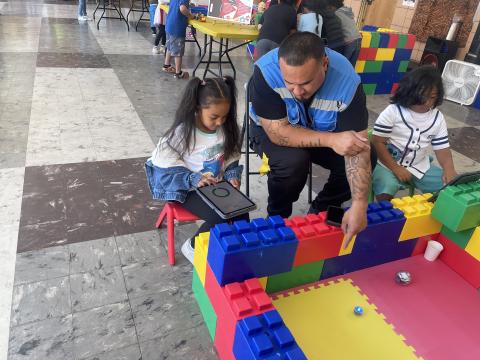
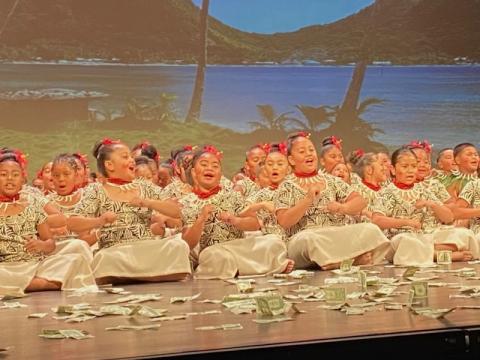
Top image: A STEAM event with one of SCDC’s collaborative partners, "P.I.E.F.E.S.T." (Pacific Islanders Encouraging Fun, Engineering, Science & Technology). Bottom image: A snapshot of SCDC’s PIYA Summer Celebration 2023.
SCDC “picks up where my kids’ schools are lacking,” she said. The children’s schools don’t have STEAM programs, for example, but every Wednesday, SCDC brings in a STEAM facilitator to teach kids about science and technology after school. The facilitator is a member of the Pacific Islander community, Noa said, and therefore understands the unique challenges her children experience in school and at home.
“My kids aren’t as open as they could be with their schoolteachers. They think, oh, you wouldn’t understand what I’m talking about; I’m Samoan, and we do things a bit differently,” she said. “Having someone who looks like you and who can relate to you, it brings your guard down and you’re more open to receiving information.”
Noa said SCDC even picks her younger children up from school, and the center provides them with a safe, supportive space where they can finish their homework until Noa gets off work. She said if SCDC didn’t exist, she wouldn’t be able to afford childcare.
“They do so much for us, including things we didn’t even ask for,” she said, like hosting drive-through graduations for her children when they finished high school and kindergarten during the pandemic.
“They have made life so much easier for us,” she said.
Susan Tan’s son, Ben, began attending CYC's afterschool program when he was in middle school. She credits the organization with helping him become the person he is today.
Ben was a preteen when he and his mother immigrated to San Francisco from China. They didn’t know English very well and assimilating was difficult. Ben struggled in school, behaviorally and academically, and his mother recognized his struggles as “a cry for help.”

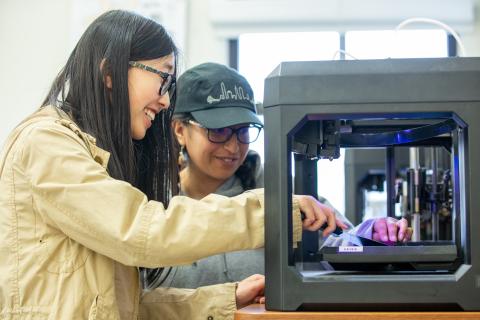
Top image: Erica Mitchell works with a student from Redding Elementary on academics at CYC’s afterschool program. Bottom image: Stefanie Almendares works with a student from Aptos Middle School during a 3D printing workshop as part of CYC’s STEM program.
“I reached out to everyone I knew to see if anyone could help, and CYC was one of the names that came up,” Tan said, speaking through a translator. She took a parenting class first, where she learned to be more patient and communicative, and then enrolled Ben in CYC's afterschool program. In the span of just two or three years, she said she saw him blossom and transform.
“It became a second home for him. I was working so much, and there was nowhere for him to go after school,” she said. At CYC, she knew Ben was safe.
Today, Ben is studying math and computer science at the University of California at Santa Cruz. Last summer while home from school, he participated in CYC’s transitional-age-youth program.
Administrators at CYC and SCDC said they are honored to be this year’s BART Holiday Toy Drive recipients. They emphasized the toys will immensely brighten their youth participants’ holidays. The organizations will receive the toy donations during the December 21 BART Board meeting at BART Headquarters.
“The majority of our youth come from low-income families, and they don’t necessarily have the means to give their kids many presents, if any presents. To provide families with something as simple as a toy can have a profound impact,” said Ben Mok, CYC Community Relations Manager.
Michelle Wu, a communications consultant for CYC, added: “One of the things we believe in the most is providing access to things, including providing access to moments of joy.” The toys from the drive will specifically go to youth at CYC’s Bayview program.
Lynn Peleseuma, Senior Program Specialist at SCDC, said her organization hosts a holiday celebration every winter before the kids start winter break. There’s caroling, cultural dancing, and festive food and drink. At the gathering, Peleseuma and her colleagues “want to make sure each and every kid has a toy to unwrap.”
“To get toys from BART, from folks in our community, is a blessing for us,” she said. “And it’s a blessing to our kids and their parents.”
If you are a member of the public interested in gifting a donation to SCDC or CYC, you can visit their websites here and here.
Debora Allen
Montgomery St.
BART's low-income fare discount to increase to 50% on Jan. 1: Here's how the program impacts an East Oakland community
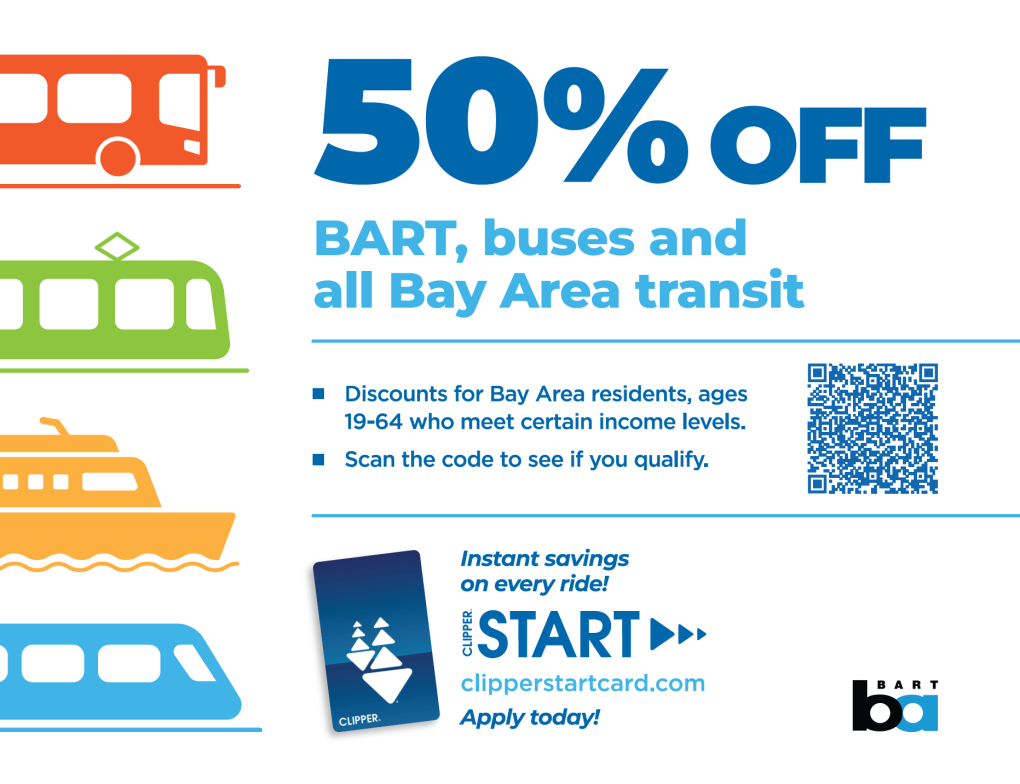
BART is helping lower-income riders pay their fare by increasing its Clipper START means-based fare discount from 20% to 50%, beginning Monday, Jan. 1, 2024. This means that Clipper START users will pay half the regular BART fare.
Clipper START, a pilot program facilitated by the Metropolitan Transportation Commission, offers the discount for Bay Area residents ages 19 to 64 whose incomes are less than 200% of the federal poverty level. Clipper START is accepted by more than 20 regional transit operators. Those who qualify can apply for the program here.
Keep scrolling to read about an East Oakland-based organization's efforts to register people for Clipper START and hear about its impact on community members.
BART offers multiple fare discounts in addition to Clipper START, including discounts for youth (50% off with a Youth Clipper card), seniors (62.5% off with a Senior Clipper card), passengers under 65 with qualifying disabilities (62.5% off with an RTC Clipper card), and a High-Value Discount (adult Clipper users who buy $45 or $60 Clipper cards when autoload is set up get $48 and $64 worth of value, or a 6.25% discount).
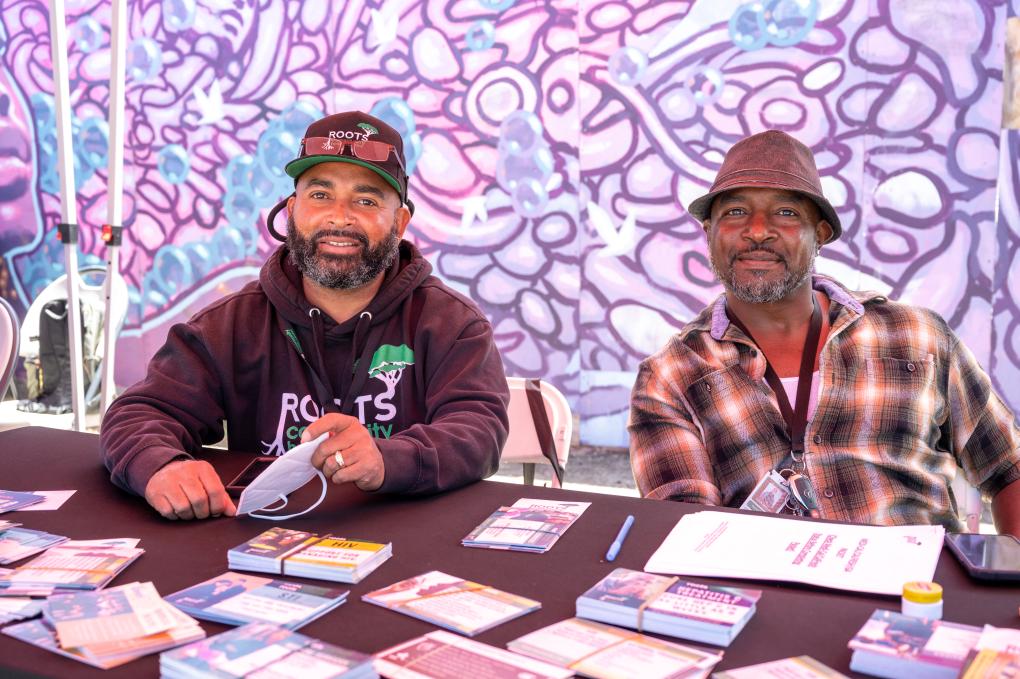
Members of the Roots Community Health Center outreach team. Roots conducts outreach to promote and register community members for Clipper START.
“When you have a Clipper card, your first thought isn’t 'I can't' but ‘What time can I get there?’” says Jamaica Sowell, who has witnessed firsthand the importance of increasing access to affordable transportation in the Bay Area.
Sowell is the Director of Programs and Policy at Roots Community Health Center, an organization working to uplift people impacted by systemic inequities and poverty, especially in a stretch of the East Oakland community known as the 40x40, where nearly half of Black families living in poverty in Oakland reside.
Since 2022, Roots has been conducting outreach to promote and register community members for Clipper START, a pilot program from the Metropolitan Transportation Commission (MTC) that offers discounts on transit fares. To qualify, applicants must be Bay Area residents between the ages 19 and 64 with a gross annual income at or below 200% of the federal poverty level. Beginning January 1, 2024, BART’s Clipper START discount increased from 20% to 50%, meaning users pay half the regular BART fare.
Roots Clinic has a holistic approach for supporting the health and well-being of the communities it serves. Enabling access to transportation, especially affordable transportation, is a key piece of the puzzle.
“Mobility has a lot to do with access, including things like health care,” said Sowell. If people don’t have the means to get to the Roots’ clinics, “they’re not going to come.”
Mobility is a central component of one's physical and mental health, Sowell stressed. Transportation, especially affordable transportation, ensures that people can access things like medical appointments, mental health care, treatment programs, benefits enrollment support, and other crucial services that organizations like Roots offer.
But going to appointments is "just one facet” of the benefits of public transportation to community members, Sowell said. Transportation gives people easier access to civic engagement activities, like city council meetings, and takes people to parks and green spaces, where you can walk, soak up sunshine, picnic with your family, and play sports with friends. For some people, just getting out of their neighborhood for a few hours is healing in and of itself.
“Transit takes you places outside your own block, including places you might not have had access to before,” Sowell said.
Clipper START actively conducts outreach to organizations like Roots, which have well-established lines of communication and trust within the communities they serve. Sowell said Roots jumped at the chance to partner with MTC on Clipper START because her organization understands the specific needs of the East Oakland community.
“When our people hear Roots is partnering with MTC and BART, it automatically establishes buy-in,” she said. “Our community members trust us and trust that we’ve vetted the program.”
Since Clipper START launched in June 2020, MTC reports that more than 30,000 people have signed up for the program. Between 2020 and 2022, the period for which the most recent data is available from MTC, Clipper START users took more than 1 million transit trips, with most of these trips taken on BART (40% of total trips).
“[Clipper START] makes me want to do more [with my family] on public transportation for necessity, but also for fun, like going to San Francisco for free museum days,” one user said.
As awareness of the program grows around the region, so too does usage.
That’s in no small part thanks to organizations like Roots, whose outreach teams promote the program at community events, apartment complexes, encampments, faith-based organizations, and door to door. Roots is exploring additional outreach avenues for the new year.
“Being able to tap into a discounted transportation platform like this is huge for our folks,” Sowell said. “Clipper START has been beneficial in improving transportation accessibility to our East Oakland community, and we look forward to our continued partnership in the new year.”
Rebecca Saltzman
BART, community partners, and BIPOC youth launch second phase of Not One More Girl with action-based strategies addressing sexual harassment

The “Our Story of Courage” Theme Embraces a Culture of Care
Watch the press conference on August 31 here
The groundbreaking, youth-driven Not One More Girl initiative that addresses sexual harassment and gender-based violence on BART is expanding with new strategies to build a culture of supporting girls* when riding transit.
Not One More Girl is a BIPOC youth-led initiative in partnership with community-based organizations and BART to end gender-based violence. Not One More Girl has become a model in the transit industry. It provided inspiration for SB 1161, which was signed into law in 2022, as well as SB 434, which is currently moving through the Legislature, to address harassment on transit and collect survey data to inform safety efforts.
The second phase of the award-winning initiative places emphasis on enabling people to have a greater sense of empowerment in a harassment situation and exhibits tools that fellow riders can use to provide support when harassment occurs.
The new tools being offered to the public are the product of a partnership between BART, The Betti Ono Foundation, and The Unity Council’s Latina Mentorship and Achievement Program, who worked together to engage local high school and college students about their experiences on transit and their ideas for action-based strategies to enhance safety and support people experiencing sexual harassment on transit. The approach for the second phase of Not One More Girl is to deepen the reach and impact of the ongoing work to increase safety at BART.
The Betti Ono Foundation, led by Anyka Howard, developed an Arts & Civic Engagement Fellowship, offering paid opportunities for transitional-age youth (ages 16-24) to guide this phase of the initiative and to amplify the voices of BIPOC and gender-expansive youth. The fellows attended design workshops in Spring 2023 and curated the theme, “Our Story of Courage,” for this phase of Not One More Girl to educate the public about safe bystander intervention as a method of preventing and interrupting harassment and other safety tips for riding BART.
The latest phase includes:
- 3 distinct art posters outlining safety tips.
- New bystander intervention cards are now available to riders to discreetly pass to people to prompt bystander intervention actions and report harassment when it is taking place.
- These cards are now available at all Station Agent booths and are being distributed by community partners.
- View a PDF of the "I Got You" bystander intervention card.
- View a PDF of the "You Got Me?" bystander intervention card.
- Beginning September 11th, BART will size trains for safety and run shorter trains to eliminate empty cars, where girls fear being targeted for harassment and assault. The schedule change also increases service on nights and weekends, so riders spend less time waiting on platforms.
Moving forward:
- BART will work with the Alliance for Girls in fiscal year 2024 to develop a youth-informed BART rider safety evaluation framework, as it pertains to sexual harassment, to define safety metrics and evaluation strategies that will guide BART’s preventative and interventional safety efforts.
- BART will develop and roll out training for frontline staff to give them tools on how best to handle situations involving riders experiencing trauma from harassment and gender-based violence, with a special focus on engaging marginalized community members.
Empowering Local Girls
“A big part of harassment is the devaluing of another person,” said Karol Suarez, a senior at Oakland School of the Arts. “And in this culture, we often don’t value people’s voices, especially women, especially women of color.”
This past spring, Suarez served as a youth fellow guiding this latest phase of Not One More Girl and helped develop the theme, “Our Story of Courage.”
“This project understands the importance of making people feel comfortable on public transit, a place that is meant for everyone,” said Suarez. “Being a part of this has made me hopeful; it shows me we’re not that messed up as a society. Even this small group is making a big impact.”
The Unity Council, under the leadership of Gabby Guzman, helped connect BART with youth and offered social-emotional support to the fellows throughout the process.
BART’s Chief Communications Officer Alicia Trost and BART Art Program Manager Jennifer Easton led the effort for BART and began the process of internalizing the initiative at BART to involve frontline workers, including Station Agents, Train Operators, Ambassadors, and Crisis Intervention Specialists.
The Not One More Girl initiative first launched in 2021, and rider survey data has indicated the project is helping reduce harassment and improve the perception of safety on BART. The launch of the second phase of the initiative coincides with BART boosting its safety presence on trains as a direct response to rider concerns.
New Art Posters to Educate the Public
The latest phase includes a powerful new art campaign by local artist Safi Kolozsvari Regalado that will appear throughout the BART system, including onboard trains and in stations. Regalado worked with youth fellows to conceptualize and design the artwork, which was inspired by the long tradition of Chicano-style ballpoint pen art. The posters depict steps people can take if they witness or experience harassment and promote the use of the BART Watch app for reporting, Train Operator call boxes on every train car, and suggestions, such as sitting in the first train car near the Train operator.
Oakland-based artist Mike Nicholls brought a cohesive graphic art design to all Phase II collateral and digital media assets for the campaign.
Bystander Intervention Cards for Riders
Two distinct wallet-size cards are now available to riders to discreetly hand to people to signal they need help or support, or to notify someone being harassed that you are there to help and support them.
These new bystander intervention cards are a concept developed by the youth design team, who expressed the need for options when asking for help or approaching a situation of potential harm. The cards include the slogans “I Got You” and “You Got Me?” with a list of actionable items riders can take to help a situation, from reporting the harassment to simply standing with someone. As young people are still trying to find their voices and figuring out how to navigate and decipher harassment, a physical card you can hand someone is an effective tool to precipitate the shift from being a bystander to becoming an agent of change.
The cards are available for pick up at each Station Agent booth at BART, and Ambassadors and Crisis Intervention Specialists will carry the cards and give them out when engaging riders. BART and the Betti Ono Foundation will also work to distribute the cards to youth through community organizations, events, and schools.
Bystander Intervention Card Version 1: "You Got Me?"
Front side and back side:

Bystander Intervention Card Version 2: "I Got You."
Front side and back side:

Sizing Trains for Safety
During youth and public engagement, BART was frequently asked to have a “women’s-only car.” There was also feedback that when train cars are empty or near empty, it makes girls feel less safe as it encourages anti-social behavior and targeted harassment and crime. While segregated spaces in train cars are in use in several countries around the world, it has not been embraced in the United States and would be nearly impossible to enforce. Instead, BART recommends people who feel unsafe sit in the first car near the Train Operator.
Beginning September 11, BART will begin to reduce the likelihood of empty cars by running the typically least crowded trains shorter. The concept of active spaces as safe spaces will help enhance the safety of all riders and will increase the presence of BART safety staff as there will be fewer cars on each train.
Framework to Evaluate Safety Metrics
In the coming year, BART will work with the Alliance for Girls, one of the original leads of Phase I of Not One More Girl, and Evaluation Studio to develop the first youth-informed evaluation framework focusing on rider safety as it pertains to sexual harassment and assault prevention and intervention on BART. Rooted in how girls and gender-expansive youth define safety, in Alliance for Girls’ Radical Visions of Safety research report published in 2021, the framework will draw from learnings, input, and recommendations from youth themselves on how BART can best collect data and measure impact of its initiatives to create actionable and effective policies and processes around sexual harassment and assault intervention.
Model for Other Transit Agencies
Not One More Girl, first launched in April 2021 in collaboration with Alliance for Girls, the Betti Ono Foundation, Black Girls Brilliance, and the Unity Council’s Latina Mentorship and Achievement Program, is recognized within the transit industry as a model for other agencies to follow to address sexual harassment and assault through a community-led process. The actions BART took during the first phase of the initiative are now considered best practices for working with youth, cultural strategists, and community partners to tackle sexual harassment in a space outside of law enforcement.
In 2022, SB 1161, authored by Senator Dave Min and sponsored by Stop AAPI Hate, was signed into law requiring the Mineta Transportation Institute at San Jose State University to create a survey tool to be made available to California transit agencies to measure rider demographic information and experiences with safety, including street harassment on transit. Phase I of BART’s Not One More Girl initiative was cited as an inspiration for the legislation, and in 2023, BART volunteered to be a pilot agency for the Street Harassment on Transit Survey being developed.
Actions from Phase I included:
- We changed policy. The BART Board updated the Code of Conduct, including signage onboard trains prohibiting sexual harassment.
- We started collecting and reporting data. BART began asking riders if they have experienced sexual harassment in the last 6 months through its ongoing Passenger Environment Survey and posts the results online and in BART’s Quarter Performance Report.
- We added reporting tools for riders. BART added “unwanted sexual harassment” as a category to the BART Watch app.
- We created a resource hub. The Not One More Girl website was launched.
- We rolled out training for the public. We produced a bystander intervention training video.
- We increased unarmed safety staff. The group recommended BART increase unarmed safety personnel, and BART expanded the Transit Ambassadors and Crisis Intervention Specialist program across the system.
- We educated the public. We deployed three Phase I campaign art posters designed in partnership with youth in BART stations and trains.
Cultural Strategy to Disrupt Harm
Not One More Girl uses youth participatory action research, cultural strategy, art, and policy change to create means of empowerment and dismantle the systems that have enabled gender-based violence and harassment. The project recognizes inequities in specific communities that are more often impacted by the intersectional issues of race, class, gender, and ability.
Quotes from leaders of Phase II of this Initiative:
Anyka Howard, founder and CEO of the Betti Ono Foundation:
“We recognize that talking about these issues with the public is going to challenge the status quo, it’s going to challenge norms, and it’s going to challenge our culture – in the Bay Area and beyond. This is a shared issue and experience that affects not only those targeted, but also the people perpetuating that harm, as well as the people who witness it, hear about it, or see it. We want to break up these harmful systems and replace them with a worldview of humanity. Our goal is to evolve and transform the culture of ridership on BART, and through this project, other transportation systems.”
Gaby Guzman, Latinx Mentoring and Achievement Coordinator of Youth Services with The Unity Council:
“Youth, especially BIPOC girls and gender-expansive, voices are consistently silenced, particularly when speaking on issues impacting them. They experience overlapping and concurrent forms of oppression, such as adultism, racism, sexism, misogyny, homophobia, and transphobia (the list goes on), which creates a challenging environment for youth to navigate, especially in transportation. Youth leading this conversation is essential. Empowering them to take up space and to use their voice will not only support the overall goals of Not One More Girl but generate a sense of transformative agency in their own lives.”
Safi Kolozsvari Regalado, Betti Ono Artist-in-Residence, San Francisco based artist:
“I hope that the realness of this campaign and my artwork help the viewer relate to the illustrations and maybe even see themselves or someone they know in them. All my work is done by hand, and every person in the campaign artwork are actual members of the community – the girls were all high school students in Oakland, for example, and the Train Operator is a BART Train Operator. I’ve enjoyed comic art since I was a kid, but I landed on the comic aesthetic for this project because of the feedback I received from youth in our design workshop. They said it would be cool if I could give the girls and women depicted in the artwork a sort of superhero quality, and my mind instantly went to comics.”
Franchesca Rodriguez, Betti Ono Transit Justice Community Engagement Facilitator and graduate student at UC Berkeley’s Department of City & Regional Planning:
“My journey into transit justice has stemmed from witnessing transformative power by providing young people with the tools they need to succeed, including advocating for a safe and reliable transportation system. I wanted to be a part of Not One More Girl because I believe that the safety and security of every individual should be a nonnegotiable priority. We are and have been at a pivotal moment in our society where women, girls, and gender-expansive youth cannot confidently say they feel safe using public services to get from point A to point B. Not One More Girl is a call to create a world where women, girls, and gender-expansive youth can freely move without fear or deep hesitation while using public transportation.”
Alicia Trost, Chief Communications Officer at BART:
“As BART is working to rebuild ridership and gain trust within the communities we serve, focusing on the safety of girls helps us explore ways to improve the safety for all riders. When speaking to students during this phase of engagement, we frequently heard the youth had never used BART because their parents wouldn’t let them. It gets to the deep-rooted fears people have about transit. As mobility providers, we must do better. We can’t be successful if we can’t meet the basic needs of our most vulnerable riders. This work is pivotal for ridership recovery as we reimagine service and roll out new data-driven approaches to safety.”
Jennifer Easton, Art Program Manager at BART:
“The ability to craft this initiative with artists playing a key role in giving voice to the work of the youth and to bring the message to our community of riders is a central tenet of the BART Art Program, which brings artists to the table as problem solvers. Whether the question is rider safety, enhancing station environments and access, connecting with local communities, or looking at sustainability with a creative lens, artists can serve a critical role in delivering important solutions for transit. Collaborating on the Not One More Girl initiative with community partners that understand the importance of art as a tool for achieving the critical goals around safety for girls demonstrates the value of nontraditional strategies.”
To learn more about the Not One More Girl initiative and access safety tips and resources, visit bart.gov/nomg.
*“Girls” refers to gender-expansive youth (cis girls, trans girls, non-binary youth, gender nonconforming youth, gender queer youth and any girl-identified youth).
